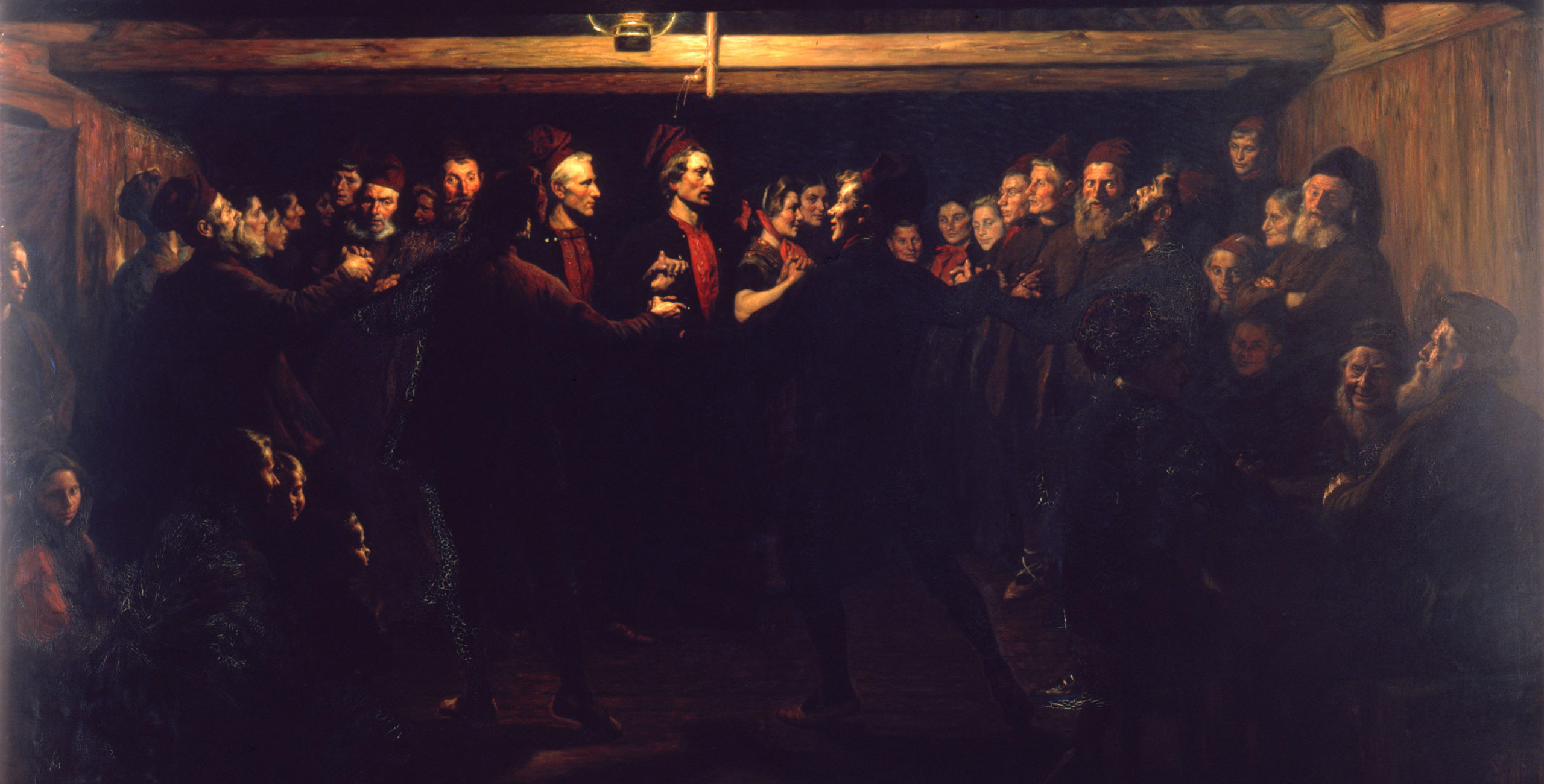
Today, it is known as the Faroese chain dance, and rightly so as it has only managed to survive in the Faroe Islands.
The rhythm is quite quirky and the ballads about kings and heroes may have several hundred verses. The captain leads the singing and everybody joins in the chorus. The symbolic significance of the chain dance is the full circle of people from all walks of life who join hands and meet face-to-face on true common ground.
The Faroese folk dance is not only a dance - it is a theatrical performance combining dance, rhythm, drama, storytelling and social relations.
No musical instruments are used but the dance is accompanied by ballads sung by the dancers. The singing or the chanting (in Faroese 'kvøðing') is very expressive and along with the rhythm and body language it is used to give an impression of the events in the told stories.
The Faroese dance is a chain dance where the dancers form a circle holding each other’s hand. The steps are simple – two steps to the left and one backwards. The skipper, that is the person who leads the dance, starts each verse and then the participants singe along.
The ballads that are sung during the dance have various contents and can be about anything from historical events, supernatural beings, battles, love and hatred. It is though common that the ballads hold a lot of wisdom and life experience. The ballads can be divided in to two groups: kvæðir and fólkavísur.
The kvæðir are in Faroese and often contain subjects from the older European history and from historical episodes in Europe and Scandinavia especially from Norway, Iceland and the Faroe Islands.
The fólkavísur originate from Denmark and are in Danish.
The ballades have since the 13th century been orally transmitted. The ballades were not only sung during the dance but also during the evenings at home, where families were knitting and working with wool when the twilight fell.
It was not until at the beginning of the 19th century that people began writing down the ballads.
The origin of the dance
The Faroese Folkdance has its origin in South Europe. In the 13th century during the Middle Ages ballade dance was popular in the higher classes in societies like Spain and France.
The chain dance was practiced in the often cold castles of kings, earls and lords. The dance spread over Europe and towards Scandinavia. In the Faroe Islands the dance was popular and used on many occasions.
People danced at different kinds of gatherings and also at home. The dance was especially popular during the cold winter as the closeness and the movement in the dance gave the participants warmth.
Gradually the dance died out in many countries, probably due to a ban from the church which saw the dance as a heathen tradition. In the Faroe Islands however the dance was preserved. The dance today is a living tradition with 15 Faroese Dance Associations in the Faroe Islands and one in Denmark.

Dansifelagið í Havn (The Dance Society of Tórshavn) singing and dancing the ballad "Flóvin Bænadiktsson"
Painting: Axel Emil Krause, 1905, Nationalhistoriske Museum Frederiksborg Slot. Photo Hans Petersen.


